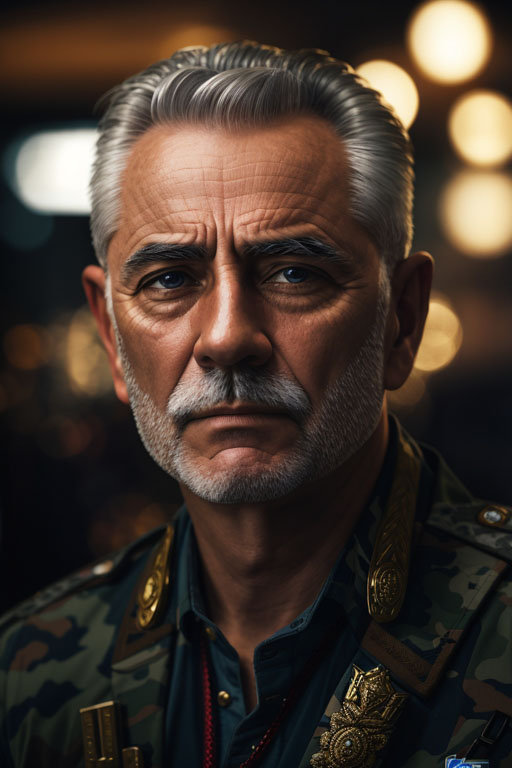Creating a Man Portrait using AI involves using various AI-based tools and techniques, primarily in the field of computer vision and image generation. Here are the general steps you can follow to create a man portrait art with AI:



- Collect Reference Images:
Start by gathering reference images of the man you want to create a portrait of. These images will be used to train and guide the AI model. - Choose an AI Tool or Framework:
There are several AI tools and frameworks available that can generate realistic images. Some popular ones include:
- GANs (Generative Adversarial Networks): GANs consist of a generator and a discriminator network that compete against each other. They are commonly used for image generation tasks.
- StyleGAN2: This is a popular GAN architecture known for generating high-quality, diverse images.
- DeepDream: Developed by Google, DeepDream can create unique and surreal images based on a reference image.
- Train or Use a Pretrained Model:
Depending on your expertise and resources, you can either train a model from scratch using your reference images or use a pre-trained model. Training a model from scratch can be computationally intensive and time-consuming, so using pre-trained models is often a more practical option. - Input Reference Images:
Provide your reference images to the AI model. Depending on the specific AI tool you’re using, this can involve feeding the images into the model in a certain format or using a specific API. - Generate the Portrait:
Instruct the AI model to generate the portrait based on the input images. The model will generate an image that combines features and characteristics from the reference images. - Fine-Tune and Edit:
The generated portrait may not be perfect, and you may need to fine-tune it or make further edits using image editing software like Adobe Photoshop or GIMP to achieve the desired artistic effect. - Artistic Enhancement:
You can apply artistic filters, styles, and effects to make the portrait more visually appealing and unique. There are AI tools that can help with this as well, such as those based on neural style transfer. - Review and Iterate:
Carefully review the generated portrait and make any necessary adjustments or iterations to improve the final result. - Save and Share:
Once you are satisfied with the portrait, save it in your desired format and share it as needed.



Remember that creating art with AI is a creative process, and the final result will depend on your input, the AI model you use, and your artistic choices. It’s also important to respect copyright and privacy when using reference images of individuals.
You can learn more Man Portrait Prompts Here
Link :>

